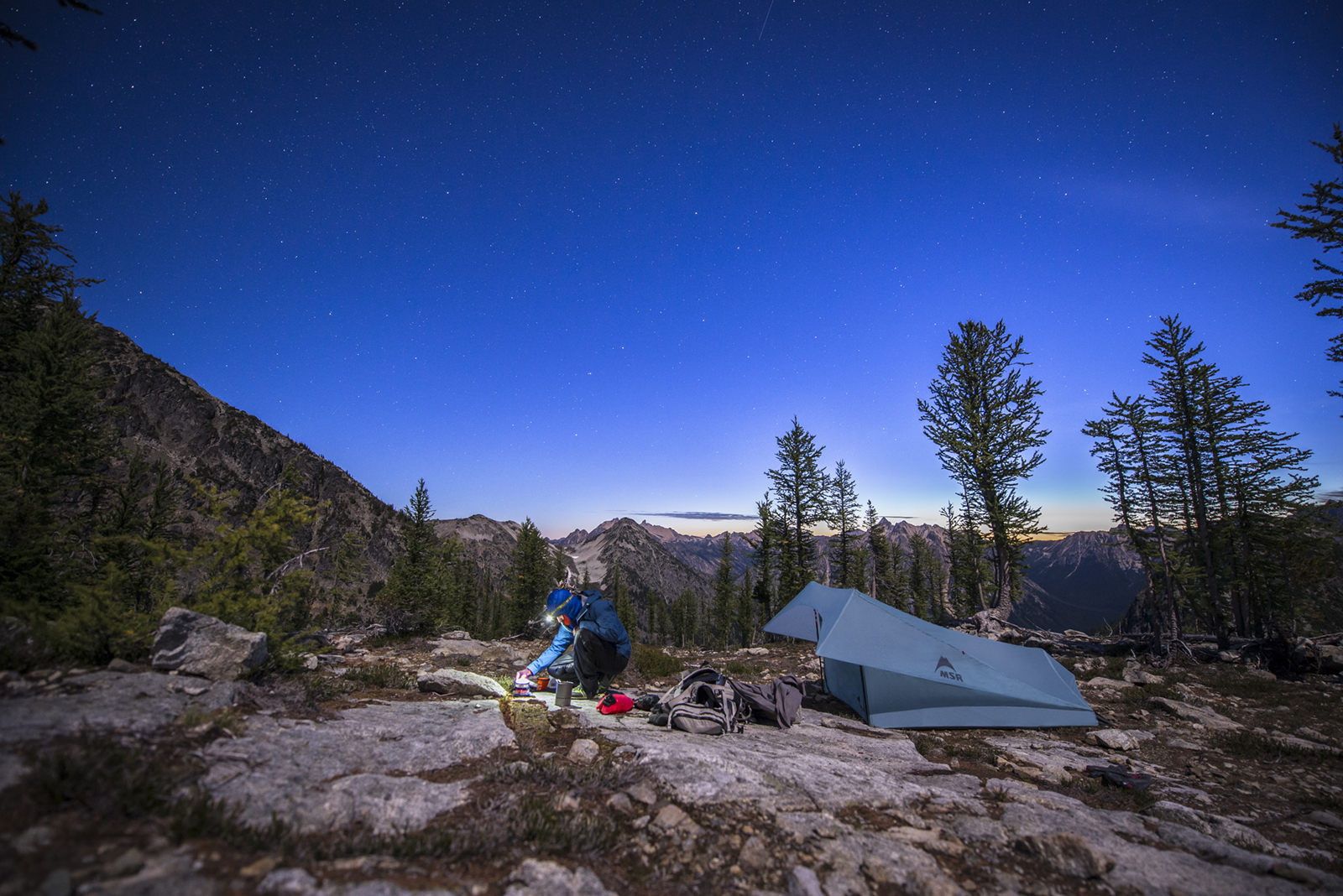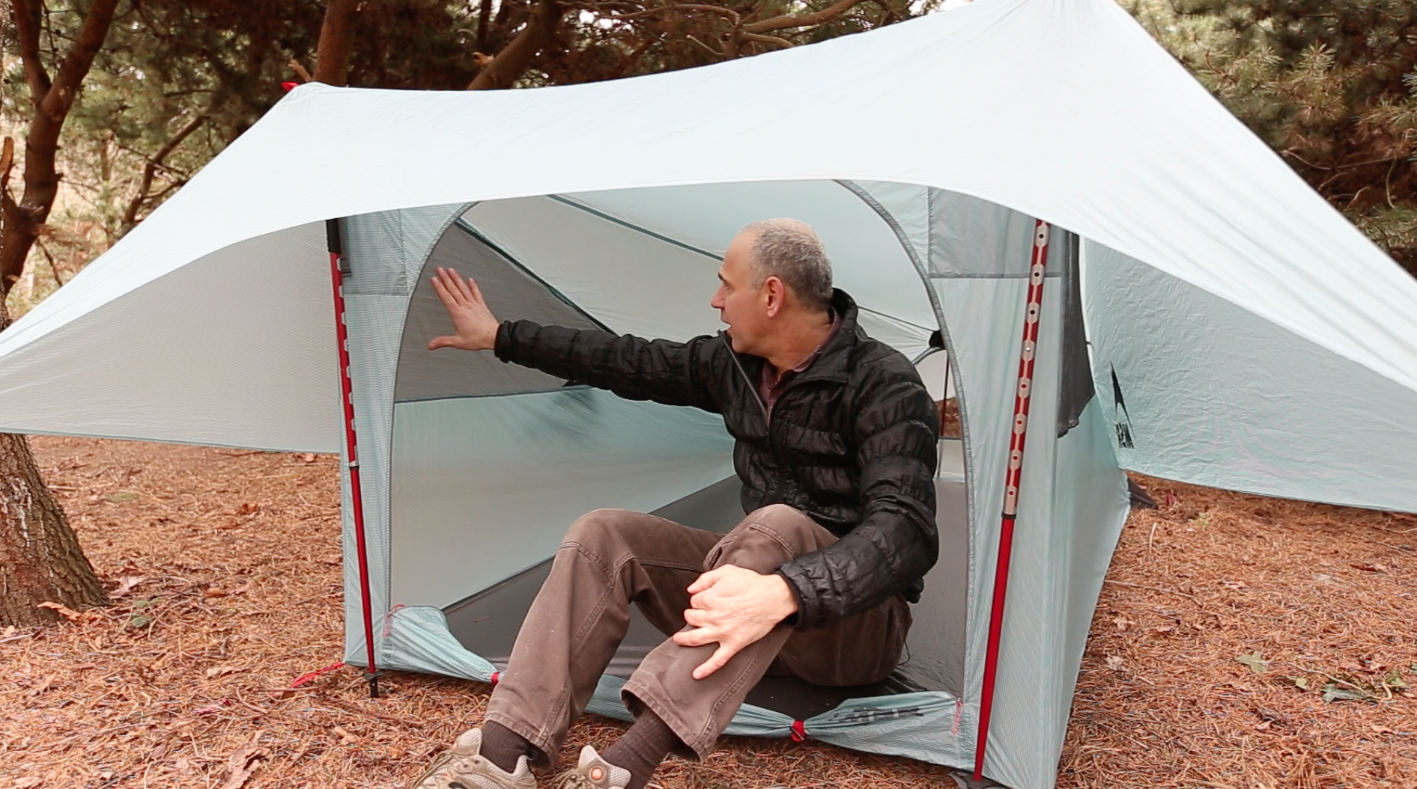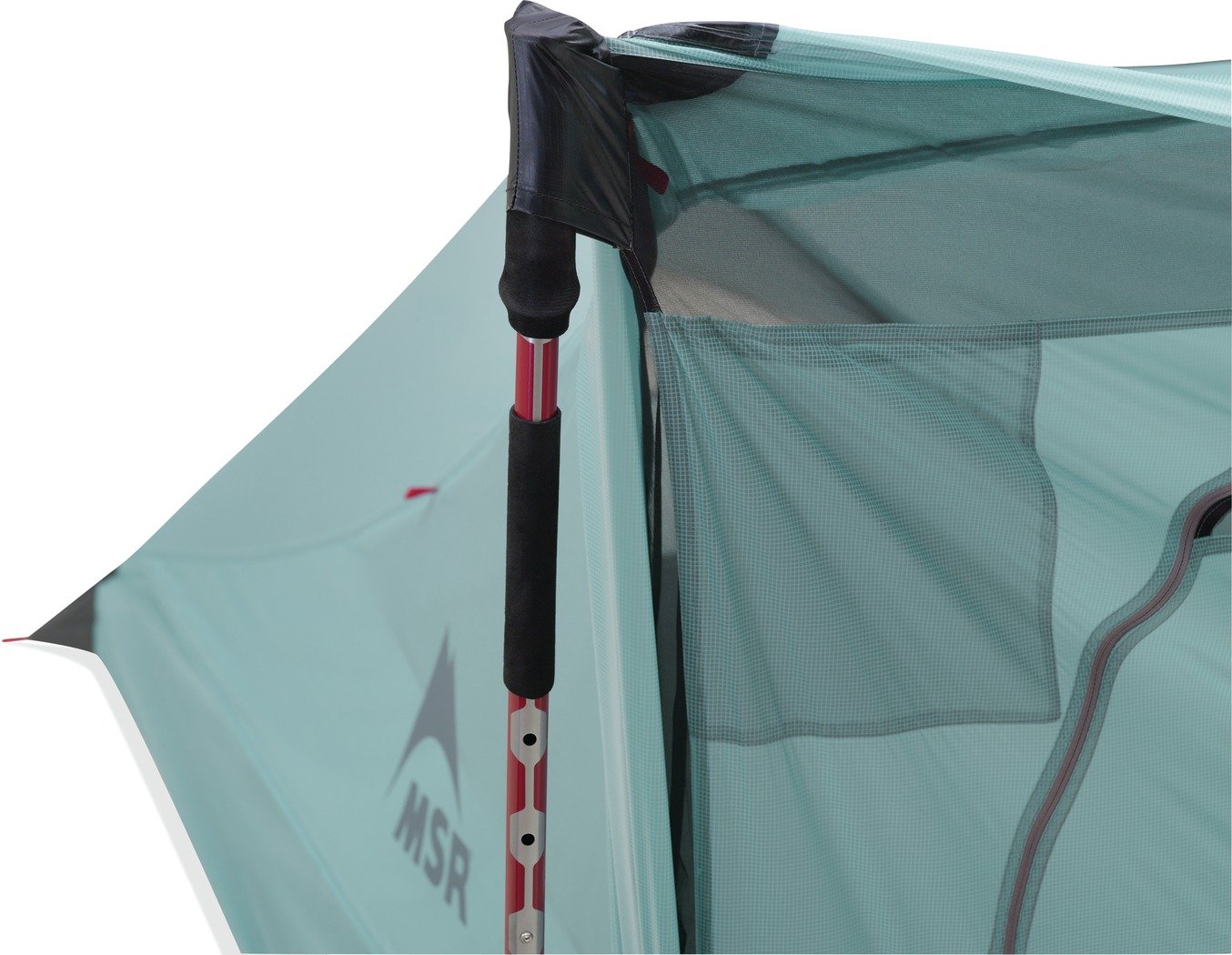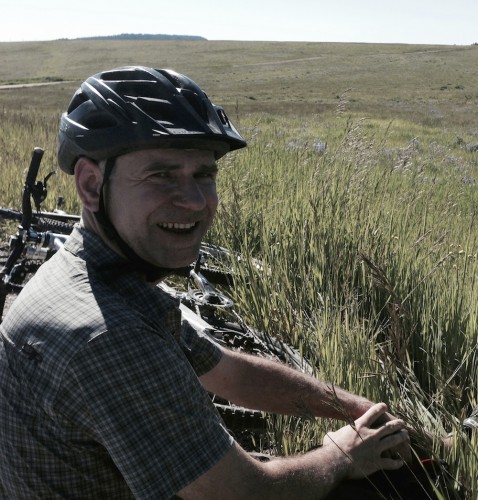New FlyLite™ Trekking Pole Tent: Behind the Gear

Product Manager Terry Breaux is always ready to talk tents, and he’s had one in particular on his mind lately: the FlyLite Trekking Pole Tent, the newest and lightest tent offering from MSR.
What’s the new MSR FlyLite tent in a nutshell?
It’s a full-size, full-protection, single-wall tent for two that offers you the comfort of a double-wall tent with the weight of a tarp—all for the easy-packing weight of 1 lb. 9 oz.
Who did you have in mind when you designed this tent?
The FlyLite is designed for the fairly serious backpacker who wants lightweight gear, thinks a traditional double-wall tent is too heavy for the job, and prefers to use trekking poles as tent poles to reduce some weight. In fact, the FlyLite can be adapted for different situations. You can take advantage of trees as support structures if you want to leave your poles at home or take them with you on a day hike. Or, if you’re a canoeist, you can even use paddles in place of the trekking poles.
How did you make the FlyLite so lightweight?
We took advantage of material technology. This is the first time we are using a superlight 10-denier fabric on an MSR tent. It’s a relatively new fabric on the market and one that didn’t exist a few years ago. The fabric and the color are light enough to allow natural light through, creating a pleasant interior.
In addition to reducing weight, are there any other tent problems that the FlyLite’s design solves?
As a single-wall tent, the FlyLite overcomes one of the traditional challenges facing these kinds of tents: their tendency to generate a lot of condensation. To address this problem, we designed the FlyLite with a lot of interior volume to increase the airflow, which helps reduce condensation, and we added plenty of mesh and venting. The high-low venting includes full vents on both side walls, a large rear panel vent, and a high vent right above the door that’s protected from driving rain. There’s also an awning that allows you to keep the door open and the tent dry when it’s raining.

What other special features went into this tent?
In addition to increasing volume, reducing condensation and utilizing lighter weight fabrics, we paid attention to all the important details. You see, the challenge is not to just make a lightweight tent (lots of companies can do that) but to make a lightweight tent that’s also durable—that’s the real test. As we always do, we did a lot of testing of this tent to find out where we needed to reinforce it for strength, and where we didn’t in order to keep it light. That’s why you see things like peak patches and reinforced tent floor corners on the FlyLite—anywhere there’s a high stress point.
MSR has been engineering tents for decades—how did you come up with the FlyLite design?
We do pull from our many years of institutional knowledge, but we’re always innovating. The FlyLite is a third-generation design that began with our Missing Link tent over 10 years ago. The Missing Link evolved into the Fast Stash, and the Fast Stash evolved into the FlyLite. Not only is the FlyLite a whole lot lighter and more spacious than the Fast Stash, its orientation is completely different. One of the challenges of the Fast Stash was that it required one occupant to sleep behind the other, away from the door. With the FlyLite, each occupant has their head at the door, so you never have to climb over someone to get in and out of the tent.

Are there any cool features on the FlyLite that might not be obvious at first?
Actually, yes. What’s really cool is that few of design elements work together to give you the experience of feeling like you’re outside the tent even at times when you’re inside, such as when you’re taking shelter from the rain. The tent’s vertical walls and large entryway allow two people to sit at the front with the door fully open while the awning and waterproof floor offer full protection from the rain. The design lets you enjoy the scenery together from within, no matter the conditions outside.
How easy is the FlyLite to set up?
While setup is not complicated, we knew this tent design would require a few extra setup steps compared with that of a freestanding tent. And while we personally think a few extra steps are well worth the FlyLite’s ultralight weight and extra volume and features, we wanted to figure out how to make things easy for the customer. For example, we added a pole pocket up at the peak to hold the top of your trekking pole so it doesn’t flail around while you’re putting up the tent, and we put aluminum grommets at the bottom to keep the end of the pole in place while you’re staking out the guy lines. There are also adjustable stake loops to help keep the tent floor taut. After putting the FlyLite up once or twice, you get pretty fluent in the setup.

Where would you take this tent? What’s your ideal scenario?
My ideal scenario is a 3-5 day backpacking trip where I’d be at camp for a couple of nights at a time at a beautiful location by a lake or in a mountain meadow. The FlyLite is the perfect tent for that setting: it’s the right weight for a multi-day backcountry trip, spacious enough to stay in for a few days at a time without feeling claustrophobic (as its accessible design lets you make the most of the views), and easy enough to pack up and pitch again at the next scenic spot that calls to you. Sounds pretty great, doesn’t it?
[Editors Note: The MSR FlyLite Tent received a Best New Gear award from The Gear Institute]

Terry Breaux has been designing tents since 1989; the last nine of those years at MSR. He fell in love with the outdoors as a child the first night he slept in a tent under the stars—in his backyard. Since then, he’s enjoyed countless backcountry nights, and has bikepacked in Europe and Asia, including through Pakistan and Mongolia, which left memories of a lifetime. A lifelong gearhead, Terry took two years off college to work at legendary tent design company Moss Tents, returning to work there after he graduated. He brings that creative ingenuity and design expertise to MSR’s high-performance tent line. He continues to pursue bikepacking expeditions, always testing gear and seeking ways to create better shelters for outdoor users.
